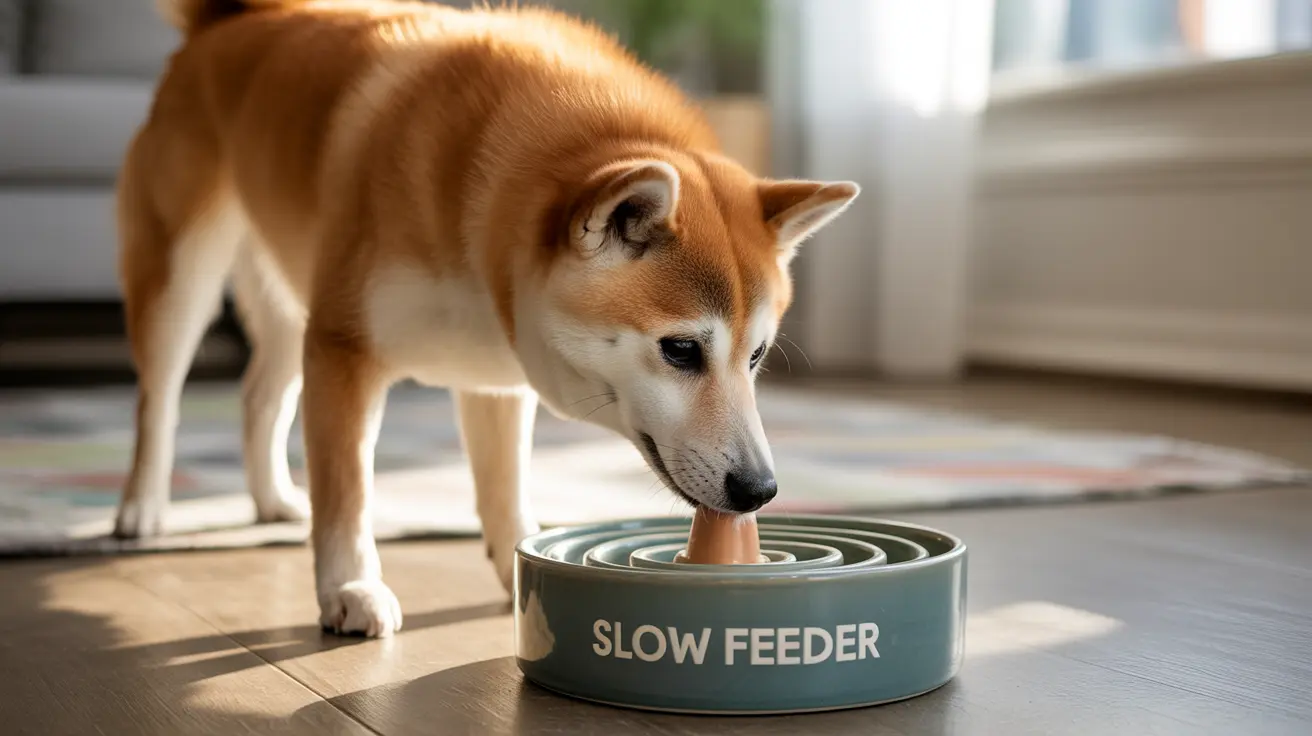Many dog owners face a common challenge: their furry friends gulping down food without properly chewing. This behavior isn't just concerning to watch - it can lead to serious health issues. Whether your dog races through meals like they're competing in an eating marathon or simply prefers to swallow kibble whole, there are effective solutions to encourage better eating habits.
In this comprehensive guide, we'll explore why dogs may skip chewing their food, the potential health risks involved, and most importantly, practical strategies to help your pet develop healthier eating habits. From specialized feeding equipment to behavioral training techniques, you'll discover proven methods to slow down your dog's eating pace and promote proper chewing.
Understanding Why Dogs Don't Chew Their Food
Dogs' tendency to gulp food stems from their ancestral instincts. In the wild, wolves and early dogs needed to eat quickly to prevent other pack members from stealing their food. This survival instinct remains strong in our domestic pets, even when they're the only dog in the household.
Other common reasons for rapid eating include:
- Competition with other pets in the home
- Previous experiences with food scarcity
- Anxiety or stress during mealtimes
- Dental problems or mouth pain
- Simple excitement about food
Health Risks of Not Chewing Food
When dogs don't properly chew their food, they face several potential health risks:
- Choking hazards
- Gastrointestinal discomfort
- Bloat (gastric dilatation-volvulus)
- Reduced nutrient absorption
- Vomiting shortly after meals
Effective Solutions to Encourage Chewing
Specialized Feeding Equipment
One of the most effective ways to slow down your dog's eating is using specialized feeding equipment:
- Slow feeder bowls with built-in obstacles
- Puzzle feeders that dispense food gradually
- Snuffle mats that hide kibble in fabric folds
- Treat-dispensing balls that release food as they roll
Dietary Adjustments
Sometimes, simple changes to your dog's food can encourage better chewing:
- Moistening dry kibble to make it more chewable
- Selecting larger kibble sizes that require more chewing
- Adding food toppers to increase interest in each bite
- Incorporating wet food to slow down eating pace
Environmental Changes
Creating the right feeding environment can significantly impact your dog's eating habits:
- Feed pets separately to reduce competition
- Create a calm, quiet feeding area
- Establish regular feeding times
- Use elevated feeding stations when appropriate
Training Techniques for Better Eating Habits
Positive reinforcement training can help establish better mealtime behavior:
- Teaching "wait" commands before meals
- Rewarding slow eating with praise
- Using hand-feeding techniques for training
- Implementing pause breaks during meals
Frequently Asked Questions
Why does my dog swallow his food without chewing, and is it harmful?
Dogs may swallow food without chewing due to natural instincts, competition, or anxiety. This behavior can be harmful, potentially leading to choking, digestive issues, and reduced nutrient absorption.
What are the best slow feeder bowls or puzzle toys to help my dog chew his food?
The most effective options include maze-style slow feeder bowls, Kong Wobblers, and snuffle mats. Choose based on your dog's size and eating style, ensuring the feeder isn't too challenging or frustrating.
How can I train my dog to eat slower and chew his food properly?
Use positive reinforcement training, hand-feeding techniques, and consistent mealtime routines. Reward slow eating and implement regular pause breaks during meals.
Are there specific foods or textures that encourage dogs to chew instead of gulp?
Larger kibble sizes, moistened dry food, and certain food toppers can encourage chewing. Some dogs respond well to mixed textures or foods that require more manipulation.
When should I be concerned about my dog not chewing his food, and when is a vet visit needed?
Consult a veterinarian if your dog shows signs of choking, frequent vomiting, or sudden changes in eating behavior. Also seek professional help if dental problems are suspected or if interventions aren't working.
Conclusion
Teaching your dog to chew their food properly takes time and patience, but the health benefits make it worth the effort. Start with simple changes and gradually implement more sophisticated solutions as needed. Remember to monitor your pet's progress and consult with your veterinarian if concerns persist.






